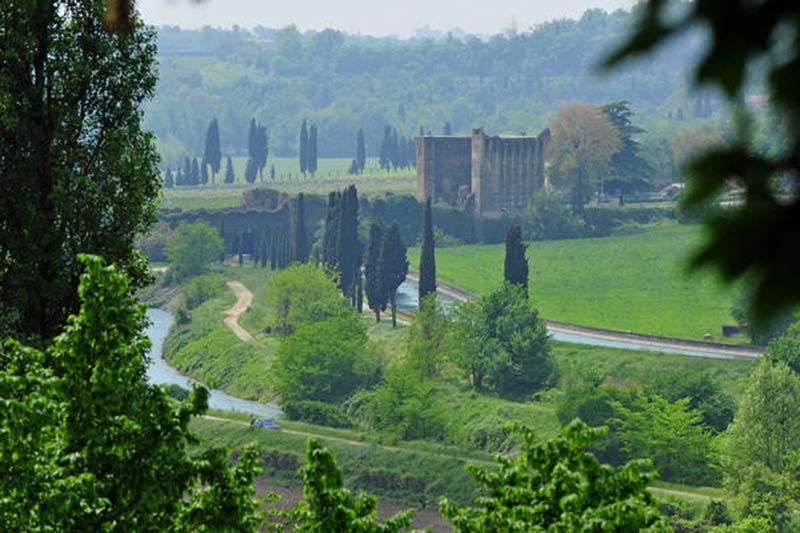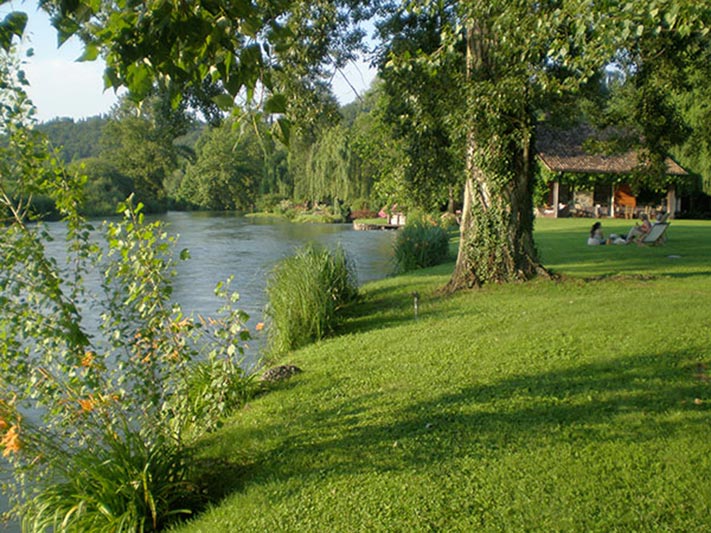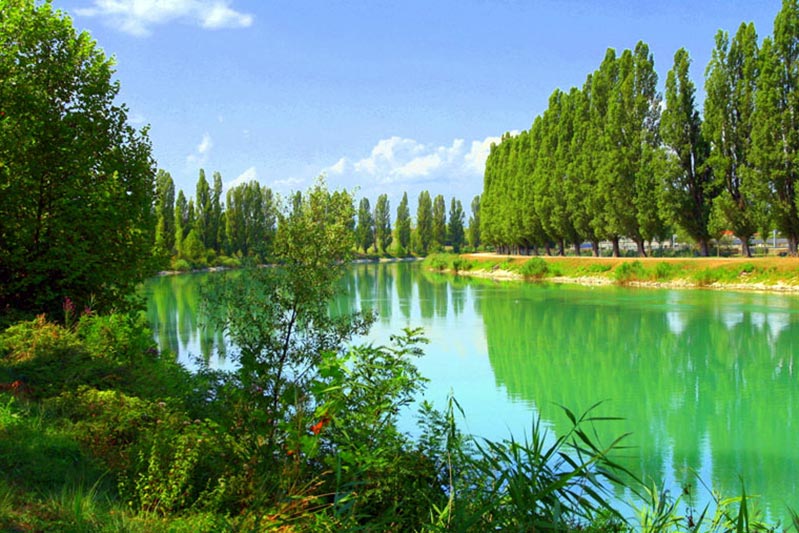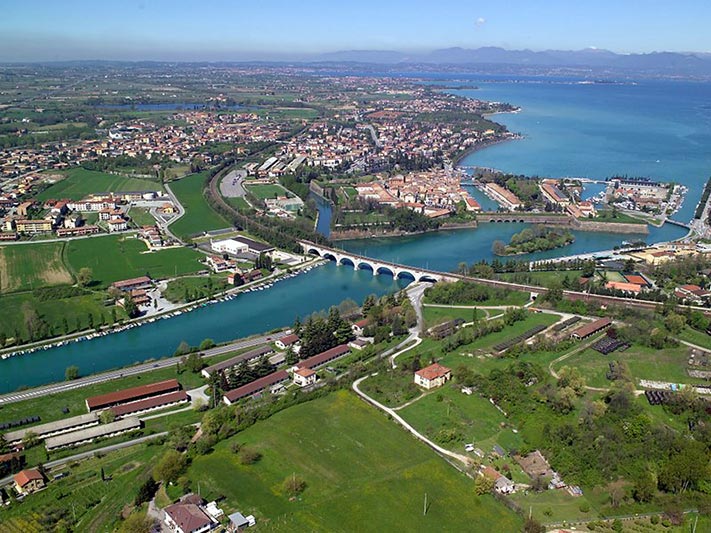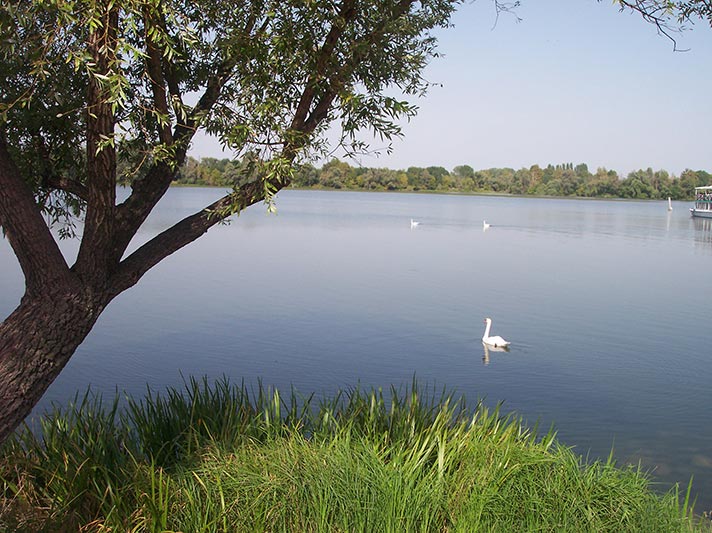Parco del Mincio
MINCIO REGIONAL PARK
The protected area of Mincio Regional Park was established by the Region of Lombardy in 1984 and comprises the territory of 13 municipalities in Lombardy that are located along the river Mincio.
We are part of the towns of Mantua, Ponti sul Mincio, Monzambano, Volta Mantovana, Goito, Marmirolo, Porto Mantovano, Rodigo, Curtatone, Borgo Virgilio, Bagnolo San Vito, Roncoferraro and Sustinente.
The Mincio Regional Park covers a large area formed by the river Mincio, which comes from Lake Garda at Peschiera del Garda (Verona), enters the territory of Mantua in Ponti sul Mincio through the rolling hills of the Garda and passing through many small villages fortified and then continues in the Po Valley up to the great river Po in Sacchetta of Sustinente.
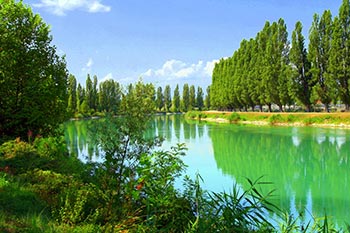 The Mincio Regional Park includes within it several Reserves and Natural Sites of excellence, and offers numerous places to visit starting from the Mincio, an important wetland, river trips in the lower Mincio, organized with departure from Mantua, Grazie di Curtatone and Rivalta sul Mincio, the observation of the storks’ nests in the forest-garden Bertone, the paddling among the reeds and bike rides along the several tens of kilometers of cycle paths that run through the park or along the Mincio from Mantua to Peschiera.
The Mincio Regional Park includes within it several Reserves and Natural Sites of excellence, and offers numerous places to visit starting from the Mincio, an important wetland, river trips in the lower Mincio, organized with departure from Mantua, Grazie di Curtatone and Rivalta sul Mincio, the observation of the storks’ nests in the forest-garden Bertone, the paddling among the reeds and bike rides along the several tens of kilometers of cycle paths that run through the park or along the Mincio from Mantua to Peschiera.
The European Union is committed to preserving the biodiversity of the European continent and thus established the Rete Natura 2000: among the areas identified by the Natura 2000 network, there are also some areas of the Mincio Park, of which we give a brief description.
Mincio Valleys
The ecosystem of the Mincio is an exceptional place where nature meets the lives of many communities in the area including the towns of Rodigo, Port Mantova, Mantova Curtatone.
It ‘an extensive wetland area within the catchment area of the Mincio Nature Reserve and a Special Protection Area for aquatic flora and fauna and the presence of numerous species of wild birds and migratory marsh habitat in the area and find shelter stop on their long journey.
The natural reserve of the Mincio with the coastal villages of Grace Rivalta and Soave have been awarded this important recognition EDEN, which means European tourist destination of excellence.
Vallazza
Another is to Vallazza nature reserve that stretches between the towns of Mantua and Virgil and whose territory is characterized by recent alluvial deposits.
These sediments have long been the subject of mining, resulting in the formation of numerous water: these sites have given rise to wetlands of ecological importance due to the presence of rare birds and amphibians.
Chiavica del Moro
Small body of water bordered by willows and poplars and hydric vegetation. It ‘s located in the municipality of Roncoferraro and has a building used naturalistic observation and in particular birdwatchers.
Bosco della Fontana
The State Nature Reserve Bosco della Fontana is located in the municipality of Marmirolo and is what remains of an area much larger formerly owned by Gonzaga.
Since 1921 is a protected area and is one of the last relics of the Po Valley plain forest.
85% of the reserve is occupied by forests, the remaining from a small prairie and wetland; located in the middle of the Hunting Palace built by Vincenzo I Gonzaga in the late 1500s.
The special reserve ranging from botany, geology, zoology with reference to the ‘importance of the conservation of dead wood, the bodies of saproxylic and protected species of some birds.
Forcello
A Bagnolo San Vito (MN) Regional Forcello, has been ongoing since 1981, an archaeological research of an Etruscan settlement that appears to have been permanently inhabited since the sixth century. B.C. for more than 3 centuries.
The Etruscans were also merchants and area Forcello was the perfect spot for these trades, because it was at the confluence of two major arteries river, the Po and the Mincio.
Po put the link in the Po valley to the Adriatic with the Aegean Sea and then the Greeks; the Mincio allowed to get to Mantua, and to penetrate to the north the plain. In addition, the area also passed the road that connected Etruria, the Apennines and the Po Valley.
The Forcello is the most important Etruscan center discovered so far north of the Po

